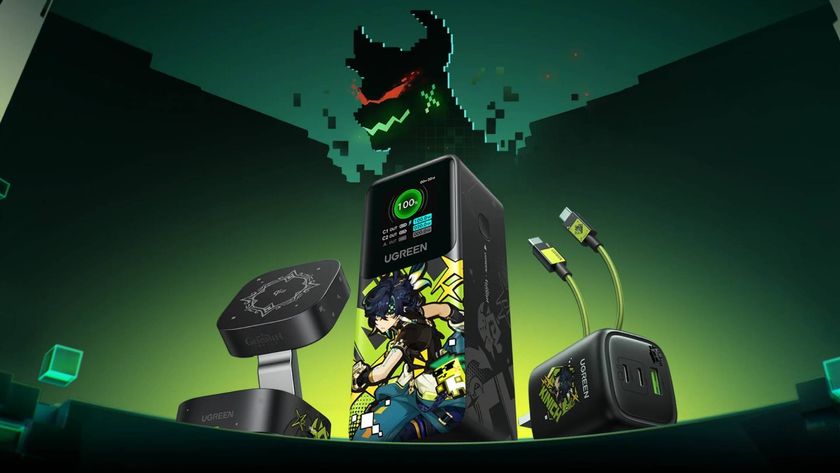I went hands-on with Acer's new handheld gaming PC, and these were my three favorite things about it
Is the Acer Blaze Nitro 7 just another late-comer or does it stand out from the crowd?
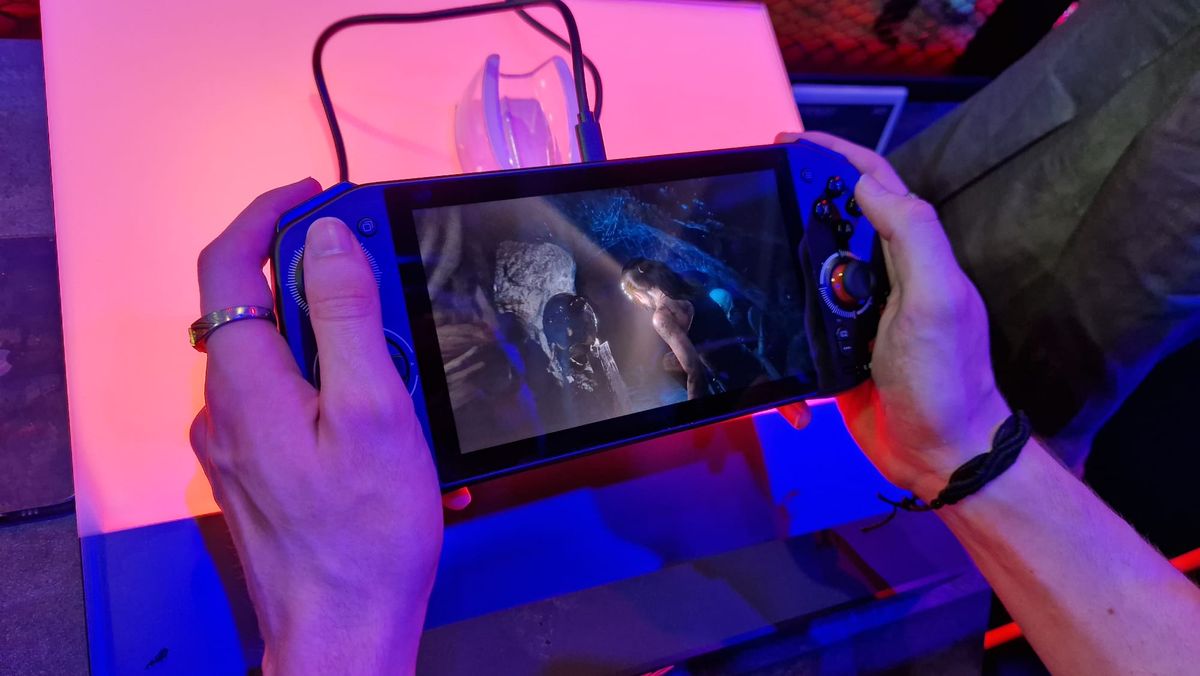
Acer is the latest brand to step into the handheld gaming PC arena. The brand revealed its Nitro Blaze 7 yesterday at its presentation ahead of IFA 2024, and after fighting through a sea of other media folks who were keen to get their hands on the device, I got to try it out for myself.
The best gaming handhelds are all the rage at the moment, and Acer has arrived pretty late to the party. There's the Steam Deck and its OLED counterpart, the Asus ROG Ally X, Zotac's upcoming Zone, MSI's claw, and Lenovo's Legion Go. These are all big names, and they're just a few of the devices Acer has pitted itself up against. From an initial look, the Blaze 7 looks like just another option. We don't yet have a price or release date, but we know its specs, which don't exactly stand out from the crowd.
An AMD Ryzen™ 7 8840HS processor seems like it'll keep its 7-inch 1080p, IPS touch display adequately powered. A 144 Hz refresh rate is present but might struggle to be tapped out without using Radeon Super Resolution upscaling trickery. There's generous storage capacity of up to 2 TB of M.2 NVMe PCIe SSD, which is appealing to me, and 16 GB LPDDR5x memory at 7500 MT/s is more than enough for its Windows 11 OS.
Compared to the spec lists of those aforementioned handheld rivals, this isn't necessarily a trend-setter. However, I'm a firm believer that technology like this is more than the sum of its spec sheet, and after trying it out, three things in particular stood out to me.
Comfort is king
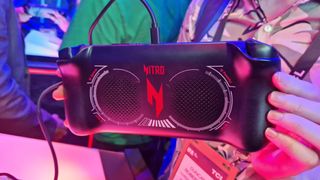
I review PC controllers, and I have to admit that alarm bells rang in my head the moment this device was revealed and no back buttons were present. These are helpful functions to have on a smaller device, and I'd honestly consider them a must-have for a handheld - particularly because so many other options include them.
As I was testing the Blaze out however, a product manager from Acer stood ready to answer my questions, and when I asked what was behind the decision to leave back buttons out, he told me that the team's research had shown that the majority of people find them tricky to use, and so they chose to save some costs.
While I'd always argue including them would make the handheld more appealing to a wider group of people, I wasn't completely turned off. The rest of the ergonomic package did enough to keep me interested for a quick run through some Shadow of the Tomb Raider.
Sign up to the 12DOVE Newsletter
Weekly digests, tales from the communities you love, and more
There's a really nice curved shape to the grips that makes it feel easy to hold for longer sessions, not to mention gripping the thing so it doesn't slip out of your hand. This type of design choice is fundamental for an expensive new gadget- not that I'm throwing too much shade at the Nintendo Switch here.
The face buttons feel great too, and I really loved the almost haptic-like feedback I felt when pulling the triggers. Rumble of any kind can be hard to get right a lot of the time - especially when a plastic chassis can send an uncomfortable and often loud sensation throughout the whole device. The feedback of the Blaze doesn't over-extend itself though, and I really liked how it supported gameplay.
If there's one thing that worries me about the ergonomic package on offer here, I'd say that it's the choice to use offset thumbsticks. The sticks themselves were big enough that precise movements were easy, but in smaller form factors like the best mobile controllers, it can cause thumb-cramp that I could already feel after a quick play-test here. I know a lot of people prefer this controller layout, so it's hardly going to be a deal-breaker for most.
A smooth operator
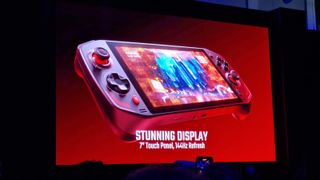
The Nitro Blaze's IPS display isn't necessarily going to stand out against the likes of a Steam Deck OLED, even if its RDNA 3 APU from AMD is much more advanced. Still, with the help of AMD's frame rate assisting tech, I was pleasantly surprised with how smoothly the panel operated.
Shadow of the Tomb Raider was running between 70-90fps during my short hands-on time with the Nitro Blaze. Admittedly, this was based on the settings tuned up by Acer before the trial I had with it, but still. As someone who tries to make every game run on a PC at a minimum of 100fps, and uses one of AMD's desktop GPUs in the form of an Acer Predator Radeon RX 7800XT, I really enjoyed the speed of the display on a smaller, handheld device. The Blaze didn't feel like a compromise of my at-home setup - more a continuation I'd be happy taking on the go.
Sometimes, using the likes of FSR or DLSS can cause textures to look a bit softer, even on a good display - a small compromise for the increased performance these can give you. I was pleasantly surprised to see some crystal clear imagery on Acer's device though, even when FSR was running. Details were vivid, colors popped, and there wasn't a jaggy line in sight.
There seems to be a good blend of performance options for the talent of the panel on this device, which I like. I particularly liked how easy it was to play around with the device's performance modes, which brings me to my final observation.
How convenient...
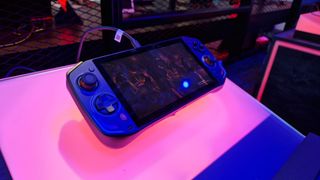
The other thing I noticed was how many clever design choices had been made for the convenience of the user. Wanting to know if this was a potential way for me to test out the best SSDs for gaming, I asked the product manager from Acer how easy it was to remove the back and slot a new drive in. With a smile, he said it wasn't difficult at all - two screws on the top and two on the bottom secure the back of the device, but removing these isn't going to damage anything or void warranties. It was clear this was something they had been careful to design.
The Acer rep made a point of showing me the USB-C ports for charging on the top and bottom of the device, which I was a fan of. He told me these were put in to give players more convenience and more options for playing while charging or plugging into a USB Hub, or dock.
There's even a fingerprint scanner on the Blaze's power button, which is a nifty wee security touch. Accessing the PC's performance options and brightness can be done at any time with the touch of one button, and a digital keyboard can be brought up in the same way.
I made a point to try and test the on-board speakers too. A noisy exhibition space where interviews, conversations, and a whole load of echo were happening around me was not exactly an easy testing ground for speakers on a handheld. Still, I could hear the louder points of the game audio in the correct directions relative to Lara Croft, which was impressive indeed. Again, it'd be nice to properly test these out when I don't have a dozen influencers shoving at me and chirping in my ear, but for a first try, this wasn't bad.
For desktop PC buying advice, check out the best CPUs for gaming, the best RAM for gaming, and the best computer speakers.
One of my earliest memories is playing SuperMario64 and wondering why the controller I held had three grips, but I only had two hands. Ever since I've been in love with video games and their technology. After graduating from Edinburgh Napier University with a degree in Journalism, I contributed to the Scottish Games Network and completed an Editorial Internship at Expert Reviews. Over the last decade, I’ve been managing my own YouTube channel about my love of games too. These days, I'm one of the resident hardware nerds at 12DOVE, and I take the lead on our coverage of gaming PCs, VR, controllers, gaming chairs, and content creation gear. Now, I better stop myself here before I get talking about my favourite games like HUNT: Showdown, Dishonored, and Towerfall Ascension. Location: UK Remote
